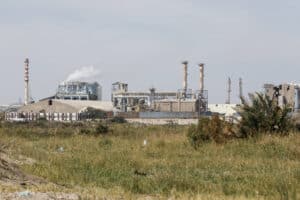The report has highlighted possible causes of the pollution.

Johannesburg and the surrounding cities have recorded exceptionally high pollution levels in the past past month.
This is according to recent data from the South African Air Quality Information Centre (SAAQIS).
“In the past 30 days, average PM2.5 concentrations in Johannesburg reached the highest monthly average level since at least 2018, 72 micrograms per metre cube,” Lauri Myllyvirta from the Centre for Research on Energy and Clean Air (Crea).
ALSO READ: Pregnancy: Air pollution may lead to congenital birth anomaly
“That’s almost five times the WHO guideline for 24 hours. This guideline shouldn’t be exceeded more than 3-4 times per year, but in Johannesburg the average for the past 30 days exceeds it several-fold.”
Pollution levels
According to Myllyvirta, the southern hemisphere winter, June to August, typically sees much higher pollution levels than the rest of the year.
“The main reason for this is that weather conditions in the winter a much more prone to smog formation. Some emissions sources can also increase in the winter, but not by sufficiently much to account for the three-fold increase in average PM2.5 pollution levels (PM2.5 is particles smaller than 2.5 micrometres),” said Myllyvirta.
ALSO READ: Court orders govt to clean up Mpumalanga Highveld air pollution
According to the report, open fires detected from satellites rose and peaked earlier than typical this year.
“For a few weeks in June-July, there were many more fires affecting air quality in Johannesburg than in earlier years. However, more recently, the number of fires has fallen to a more typical level, but the higher-than-average pollution has intensified.”
Other possible sources of increased emissions include power plants and industrial plants around Johannesburg, particularly in Mpumalanga, reads the report.
“Satellite-based measurements of NO2 levels, which correlate closely with the amount of fossil fuel burning, show a significant increase year-on-year in Mpumalanga, but a drop in Gauteng. Therefore, increases in local emissions are unlikely to play a role. Eskom has reportedly been working hard to increase power generation at its decrepit power plants, and increasing the use of diesel to make up for shortfalls in available capacity which is likely a significant part of the explanation.”
ALSO READ: Clean up Mpumalanga’s toxic air, organisations demand
According to the report, earlier modeling shows that coal power plants are capable of causing pollution in Joburg at the levels observed in the past months, further implicating them as one of the sources behind the episodes.






